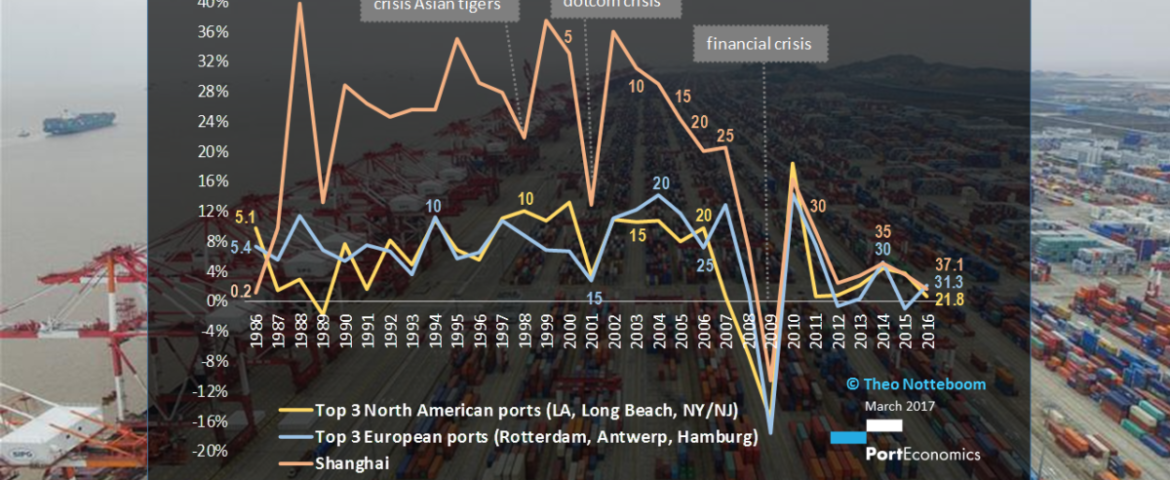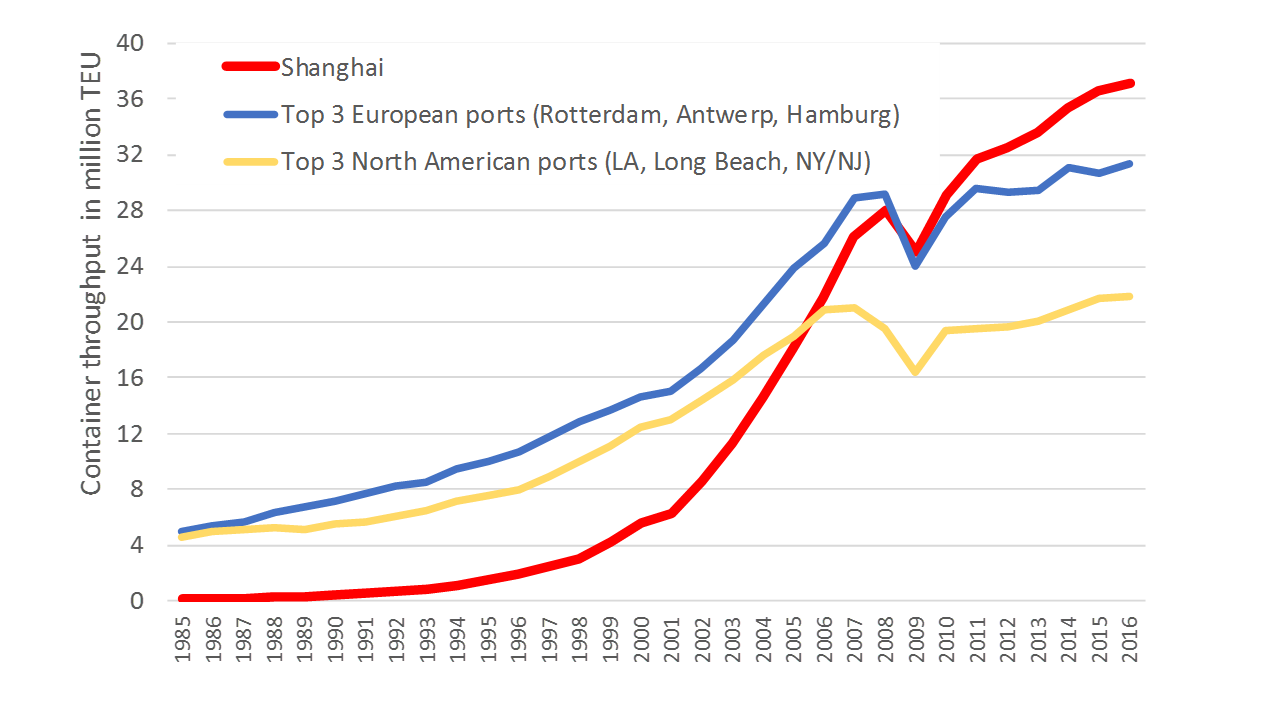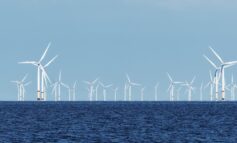By Theo Notteboom
Shanghai was a latecomer in the container business: its first container terminal was opened in 1983
The Portgraphic shows Shanghai’s year-on-year growth in container throughput compared to the top three container ports in Europe (i.e. Rotterdam, Antwerp and Hamburg) and the top three container ports in North America (i.e. Los Angeles, Long Beach and New York/New Jersey).The period of observation starts in 1986. The top three European ports started to receive containers shortly after the launch of the first trans-Atlantic service of Sea-Land in 1966. By 1986, the combined volume of the top three ports in Europe (and in North America) already surpassed 5 million TEU while Shanghai had a very modest volume of some 200,000 TEU. Shanghai was a latecomer in the container business: its first container terminal was opened in 1983 and located at the Huang Pu River, a tributary river of the Yangtze passing through Shanghai’s city centre. Baoshan was the first terminal located along the Yangtze River.
Y-o-y growth rates of 20% to 40% in the 1990s and the early 2000s
The port of Shanghai experienced a spectacular annual TEU growth of between 20% and 40% throughout the 1990s, while the top ports in North America and Europe saw more modest growth figures of up to 11%. Shanghai’s throughput reached 5.6 million TEU in 2000 or 27 times more than in 1986. The favourable policy to turn Shanghai into an international shipping center, the opening up of China and China’s accession to the WTO all meant that growth remained at the same very high level between 2000 and 2007. Only the dotcom crisis in 2001 led to a growth of ‘only’ 13%. Since the mid-1990s, the steep rise in demand led to the development of a series of new terminals in the Waigaoqiao area in the Pudong district at the south bank of the Yangtze estuary and northeast of the city centre. Phases 4 and 5 of the Waigaoqiao development involved the opening of the Shanghai East Container terminal (SECT) in 2002 and the Shanghai Mingdong Container Terminal (SMCT) in 2005. By 2006, Shanghai’s volume already reached 21.7 million TEU, thereby surpassing the combined volume of the top three North American ports . Shanghai’s steep growth curve meant that the port needed only three years to move from 5 to 10 million TEU, another three years to pass the 20 million TEU mark and only one year to move from 21.7 million TEU in 2006 to 26.1 million TEU in 2007. To put things in perspective, Shanghai’s TEU growth in 2007 was similar to what the ports of Algeciras and Valencia (i.e. Europe’s no. 5 and 6 in volume terms) each handled throughout the year 2016.
Yang Shan, an offshore terminal complex providing much needed deep water capacity
Already in 1998, the Shanghai port authority came to the conclusion that the terminals along the Yangtze river were not sufficient to accommodate future growth. Furthermore, the maximum draft of 14.2m at the Waigaoqiao terminals started to become a constraint in dealing with the ever larger container vessels. In the end, Yang Shan, a group of small islands located at the mouth of the Hangzhou Bay, was chosen as the location for a new massive offshore terminal complex connected to the mainland via the newly constructed Donghai road bridge with a length of 31.5km. The first phase of the Yang Shan complex was opened in 2004 with a capacity of some 2.2 million TEU. Three more phases followed. Phase 4 will be completed this year and will add some 4 million TEU to the already impressive terminal capacity of Yang Shan. The offshore complex of Yang Shan gave Shanghai much needed deep water terminal facilities to accommodate growing demand.
More modest growth in the past few years
The financial crisis made an end to Shanghai’s spectacular rise as the world’s number one container port. The port’s volumes dropped 11% in 2009, compared to -17.6% in the top three European ports and -15.9% in the top three North American ports. While Shanghai continued its growth path after the dramatic year 2009, the recorded growth rates became much lower than before the crisis. Since 2012 the port’s annual growth in container throughput even remained below 5% with 2016 showing a very modest rise of 1.6%. In other words, Shanghai’s growth path is more and more in line with the modest traffic development observed in the top North American and European ports. Even at these more modest growth rates, Shanghai managed to add 11 million TEU to its container volume between pre-crisis year 2007 and 2016. Last year the Yangtze port recorded a total throughput of 37.1 million TEU thereby strengthening its position as the world’s busiest container port. In comparison, the top three north American ports only added 0.87 million TEU to their volume base in the period 2007-2016 to reach 21.8 million TEU in 2016, while the top three European ports recorded a growth of 2.47 million TEU in the same period to end up with 31.3 million TEU in 2016.














